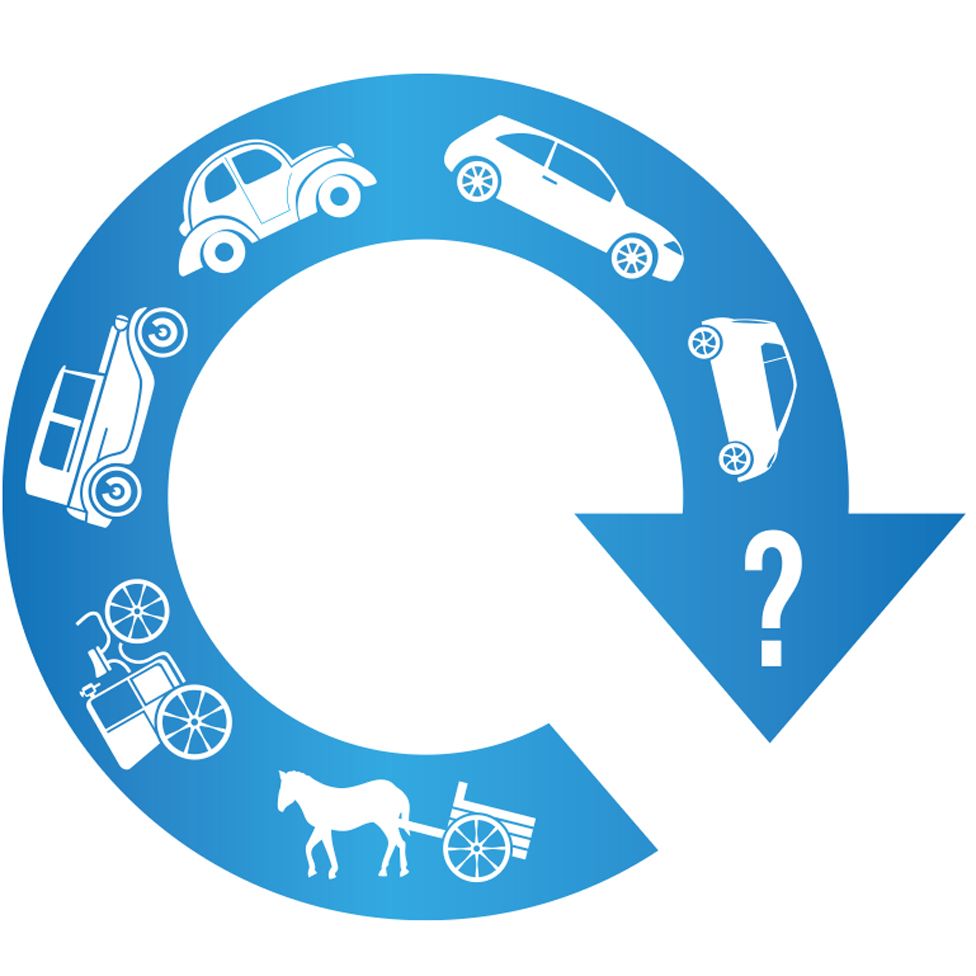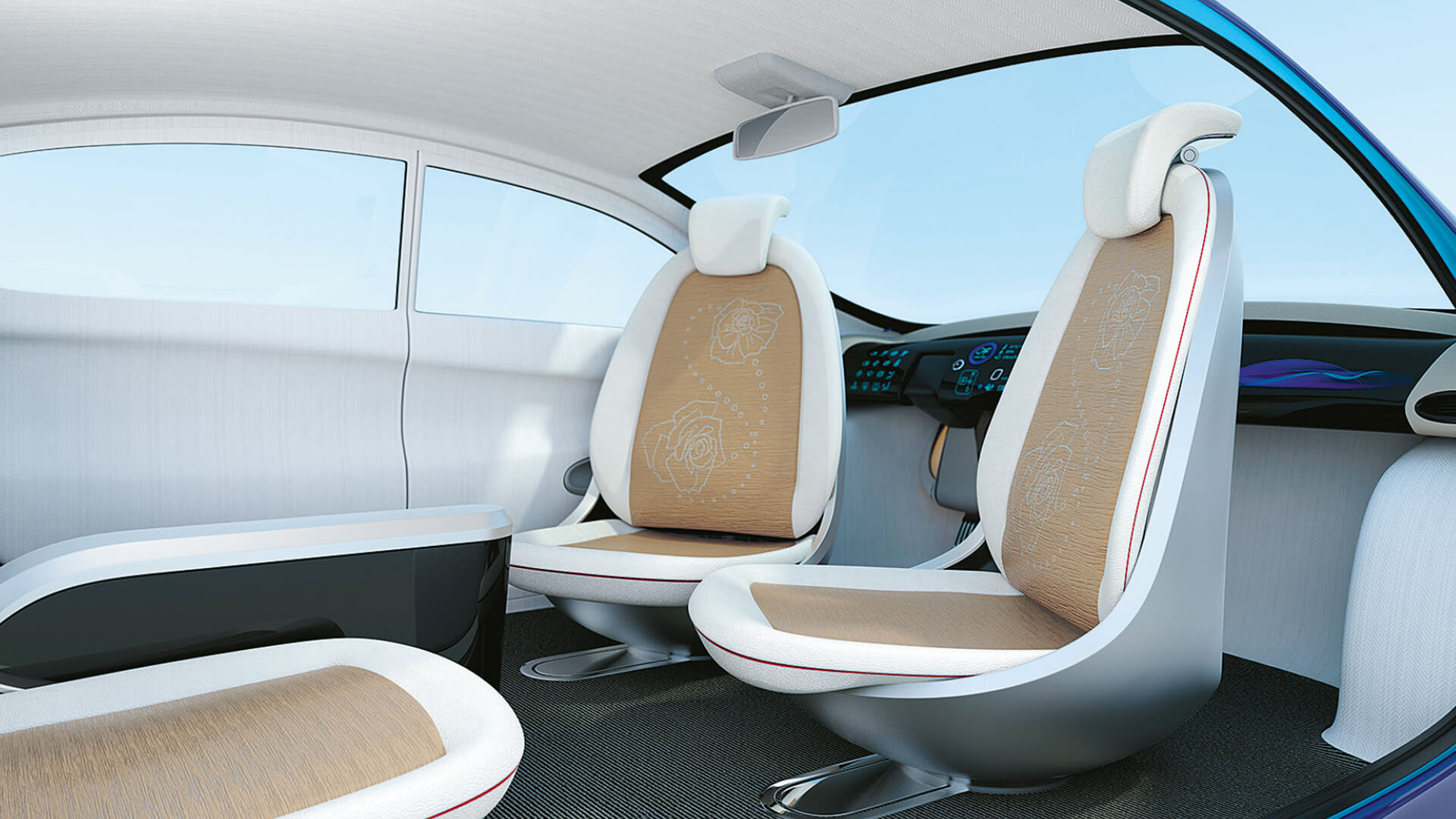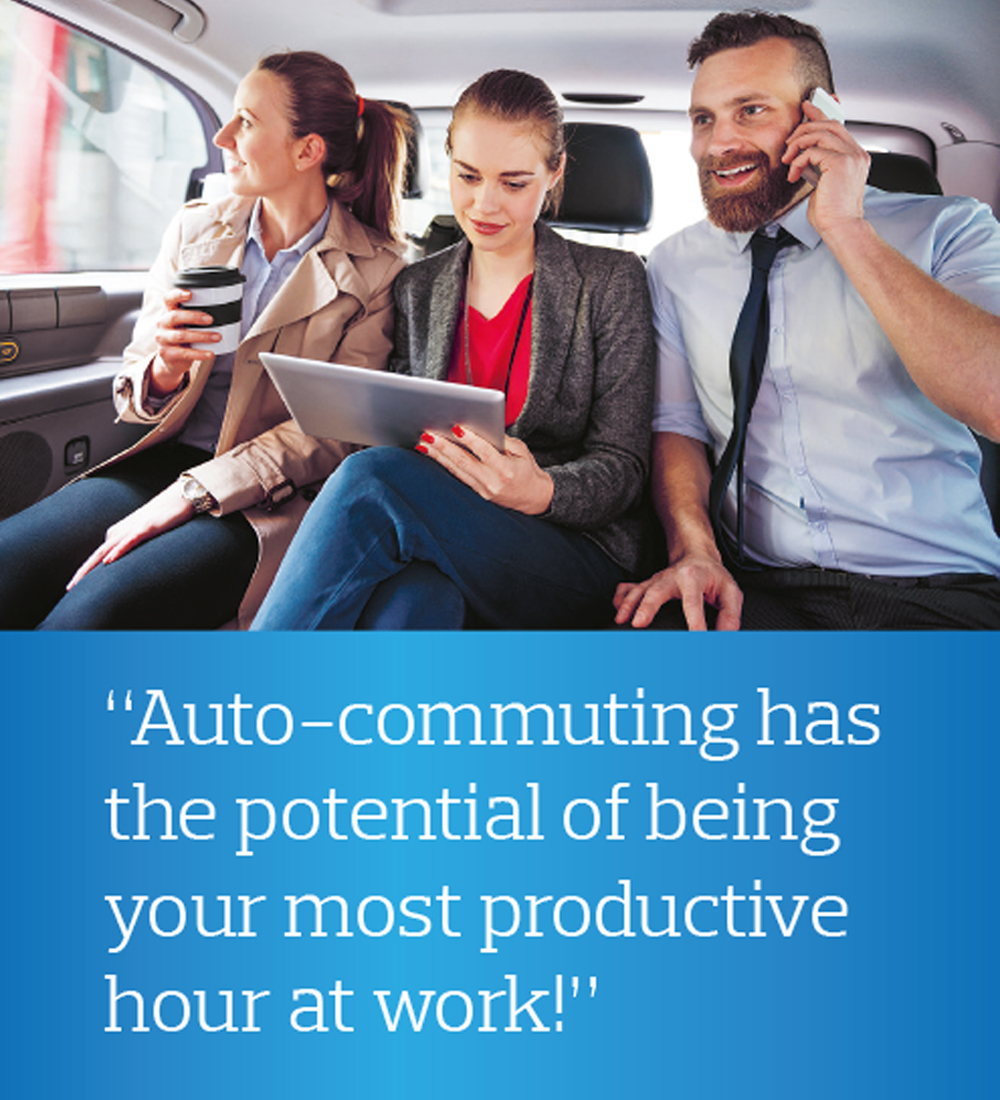Trends in worklife

Trends in worklife
The job market is changing fast. And so is the need and driving forces in the work force. These are some of the most important trends within HR right now.
Five jobs that are robot safe – for now
The question is not if, but to what extent and when, robots, automation and AI will conquer the job market. It will most likely not only replace routine, standardized tasks, but also more complex performances.
The World Economic Forum predicts that by 2020 robot automation will lead to 5 million less jobs across 15 developed nations. This might also lead to totally new roles; International Data Corporation (IDC) believes that 30 percent of leading organizations will implement a chief robotics officer role and/or define a robotics-specific function within the business by 2019. The upside might be leaving all the boring and static jobs behind and embrace the option that there could be more space for creative and artistic jobs. Here are some other suggestions on future careers, from ShellyPalmer, a list of five jobs that robots will be the last ones to take over:
1. Pre-school and Elementary School Teacher
2. Professional Athlete
3. Politician
4. Judge
5. Mental Health Professional
There are many views on this subject. One of the optimists being Kai-Fu Lee, founder of venture capital firm Sinovation Ventures. In an interview with CNBC he declared that he believes that AI will replace 50 percent of human jobs in ten years and that it will “create a huge amount of wealth for mankind and wipe out poverty”. Spanish economist Daniel Lacalle is a bit more skeptical: “Evidence shows us that if technology really destroyed jobs, there would be no work today for anyone. The technological revolution we have seen in the past 30 years has been unparalleled and exponential, and there are more jobs and better salaries.”
Another interesting thing to keep in mind: throughout history, we have invented tools to lighten our burden, but we don’t seem to have gotten more spare time.
Life-long learning will attract talents
In the ever-changing world a lot of things will also be different from a HR perspective. The future workforce will be made up of a wider range of ages, nationalities and ethnicities than ever before. This means that companies need to build an inclusive culture where everyone feels welcome. There will also be a need for lifelong learning, as more and more people will work for a longer time. The old model of learning a profession first, then sticking to it ever after simply isn’t doable. Enabling lifelong learning and being a true learning organization will be a competitive advantage.
Instability is affecting Millennials
For some time we’ve heard of the ”gig” economy – basically consisting of millennials not that keen on having a permanent job and wanting to own their career and development. It turns out, this seems to be connected to age and the outside world. As millennials get older and when surrounded by instability, the need for a secure income and base are more important. The millennials have also been known to be value-driven, but research reveals that pay and financial benefits drive millennials’ choice of organization more than anything else.
The global job market might be history
Will Brexit and Trump disturb the globalization of labor? In recent years the opposite has become a concern for many businesses. Global talent boundaries have been eroded and the job market has become an international arena, making the competition for key talents harder. Not least when it comes to tech talents who are the true winners, because of the technological advances. But recent events, like Brexit and the election of Donald Trump, might lead to new regulations and requirements that will make working abroad more difficult, indicating that we will have a more de-globalized job market ahead.
The heart of France
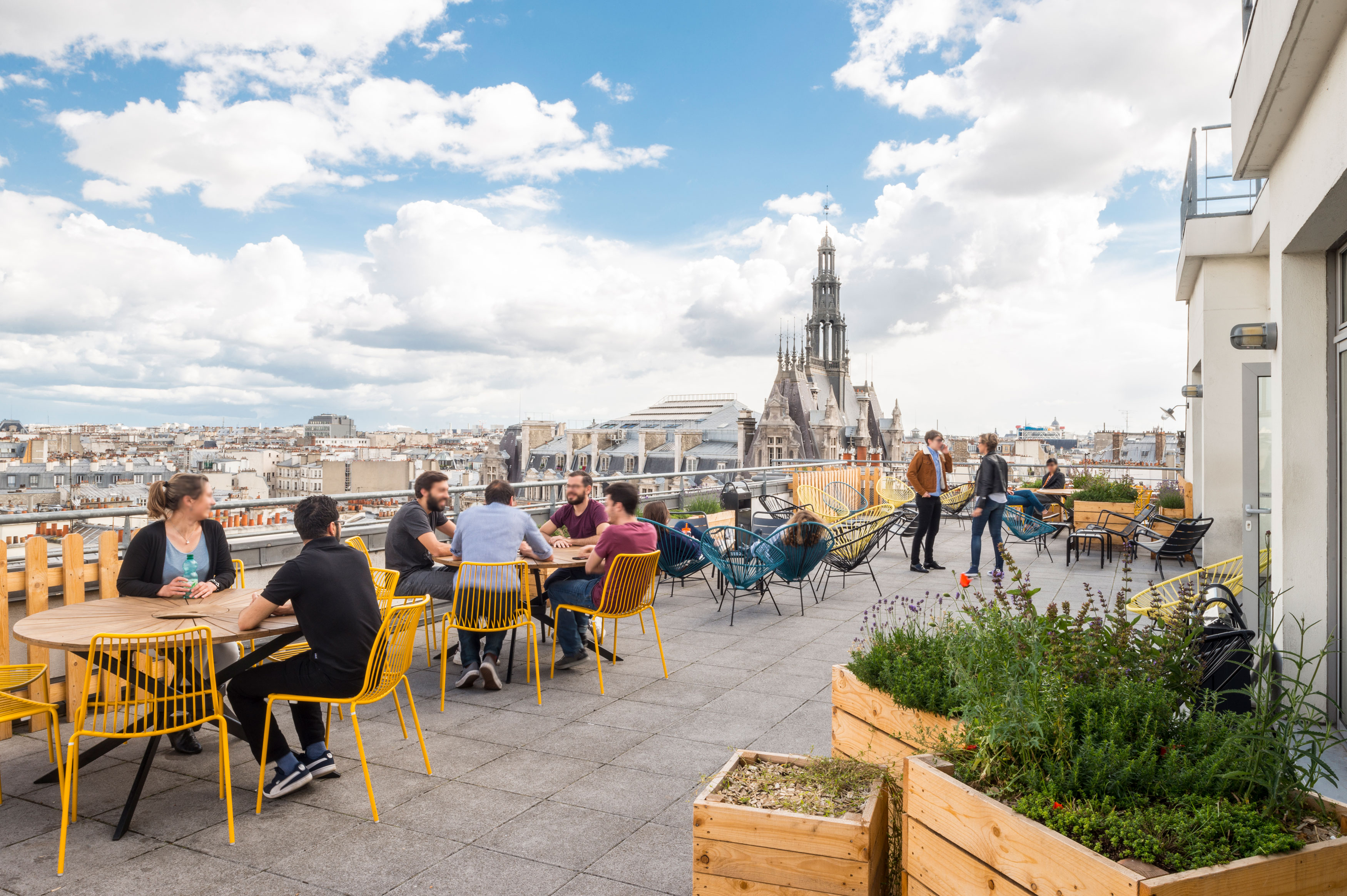
The heart of France
Set up in 2006, Leboncoin is a true online success. The marketplace has become a reflection of French society and a social phenomenon.
Leboncoin’s stats are impressive: 27 million classifieds posted and 26 million monthly unique visitors, making it the fourth most visited website in France, competing directly for audience figures with the giants of Silicon Valley (Google, Facebook and Youtube). When the team behind Leboncoin set up shop in France, it comprised all of two people, Olivier Aizac, former director, and one developer. “I was the director of…myself,” Olivier says ironically, remembering the infancy of a company which now counts more than 500 employees.
In order to recreate the Swedish website, Blocket, in the French style, they adopted a free listings model to stand out from the competition and aim for popular success by insisting on simplicity. “We didn’t want any barriers to entry,” Olivier explains and tells another story from the beginning: “Leboncoin was nearly called ‘chez Georgette’, after my grandmother, because I wanted to remind the team that we needed to come up with a website that even older people would be able to use.”
Proximity and popular appeal, then. The aim was to design a site that would appeal to every French family, and this is still the main priority today. Listings snowballed because they were free, user figures grew very quickly, and the site listed products that couldn’t be found elsewhere (ideally, local to the user) – the basis for long term success was in place. In 2008, Leboncoin.fr already had four million monthly unique visitors; in 2017, there were 26 million unique visitors in total, 37 percent of the French population. “It’s one of the rare Internet success stories to have come from the grass roots, a site with mass appeal that has spread to all social strata,” says to Antoine Jouteau, current CEO. A bottom-up revolution, as opposed to a trend imposed “by geeks, mostly ABC+ and North American” as Antoine puts it.
A social phenomenon
Leboncoin became a reflection of French society, and turned into a vast public marketplace, which the big dailies had no hesitation in calling a social phenomenon. This did not escape the notice of politicians. When the company celebrated its tenth year in business in 2016 and moved to new premises (a splendid art deco building in the heart of Paris), President François Hollande was the guest of honour.
With its enormous user base, the site holds up a mirror to French purchasing habits, in a way that sometimes gives rise to new solutions. For example, in the depths of the economic crisis, users came up with a jobs section. In 2014, the team noticed that 60,000 businesses were recruiting up to 200,000 people on an ongoing basis. Since then, a dedicated category has been created, and last year 800,000 people found a job through Leboncoin, a fact Antoine Jouteau considers to be very empowering.
“Leboncoin became a reflection of French society”
Users are Leboncoin’s lifeblood and top priority; indeed, they are the cornerstone of the site’s economic model. These days most of the revenue is generated by paid options, known as freemium content. A business plan which has proved its worth, since it has now been adopted by the site’s other international versions. “Le bon coin means ‘a great place’ and it really is a great place for users,” Antoine points out. He smiles as he recalls users complaining that they couldn’t find a “hybrid” filter in the automobile category (one of the platform’s success stories, with 7.9 million visitors per month, making it the top car sales site in France). The team reacted fast and the missing category was created within a fortnight. Vocal requests for in-app instant messaging and a way of paying for transactions on the website? The former was one of the new features for September 2017 (following seven months of work, no less), and the latter is in development for 2018.
Today, Leboncoin has become part and parcel of new consumption trends, where secondhand is a purchasing choice. According to a 2016 study, 89 percent of its users choose it in order to make more responsible purchasing decisions. For Oliver, this is clearly an essential part of its success: “We no longer live in a disposable society, people have more awareness of transactions involving other individuals, they have woken up to mindful consumption.” As a knock-on effect, the secondhand trend has a positive impact on the environment (in terms of carbon dioxide savings), but also provides access to products that people can’t necessarily afford to buy new, such as smartphones. A virtuous effect, according to Antoine, which also plays a part in the site’s success.
All in all, Leboncoin has fulfilled its original ambition by becoming a meeting place like the village bistro after which it is named, where everyone stops by for their daily shot of caffeine.
Biking into the future

Biking into the future
Autonomous cars and space travel – but what if technology will make a 200 years old invention the transport vehicle of the future?
Everything has changed,” my grandfather said. He lay in his bed in a hospital on the west cost of Norway and he was dying. From his bed he could look out at the sea. I was sitting on a chair by his bed, I held his hand and asked him to tell me what childhood was like in a small fjord in the early 20th century.
“We did not have cars,” he said. “ No electricity. No TV or radio.”
In my head I completed the list: No Internet, artificial intelligence, space travel, sensors or smart phones. Everything was different.
“Is nothing the same?” I asked. He closed his eyes. For a long time.
“The bike,” he said eventually. “I had a bike.”
The bike was not a new thing when granddad was cycling through the country and along the coasts at the beginning of the 20th century. A hundred years had already passed since the German inventor Karl Drais kicked himself around Mannheim on his Laufrad, the very first bike, the precursor of all mechanized human transport. That was 200 years ago.
“What if you had access to a bike everywhere, all the time”
I was recently invited to a TV debate. The theme was transportation systems in cities. We did not talk about self-driving cars or flying cars. Nor about drones or jetpacks, which I dreamt of as a child. And definitely not about Segway. We talked about bikes. The mood was bad.
There were two reasons for this debate to reach Norwegian TV channels. The first was that I had rented a bike in Copenhagen for a weekend and described it like this in the newspaper Aftenposten: “For someone living in Oslo biking in Copenhagen is like visiting a more advanced culture, a bit like how Neanderthals might have felt when they met Homo sapiens. A good many things are possible to recognize, but much is different and evolutionally superior.”
A hipster would use a 200 year old bike
Recently Copenhagen was, once again, declared to be the best cycling city in the world. That is not by chance. In the past ten years Copenhagen has invested EUR 134 million on infrastructure. I shall come back to what the money has been used for. The advantage gained is what every city in the world is wishing for itself. Around a third of all transport of people in Copenhagen is by bike. That is the second reason for this debate to be ignited. Fewer cars in the city is the mantra of our times, the Zeitgeist itself.
The motor car – actually a development from Karl Drais’ invention – was, in its time, a fantastic technological breakthrough. But today there are many good reasons for cities to regret the cars and wanting to get rid of them. The most important reason is the rapid growth of the world’s population and that an increasing share of them live in cities. In 1950 around 30 percent of the world’s population lived in cities. In 2050 the share will be 66 percent, according to the UN.
Cars and cities are actually a terribly bad combination. The car takes up an enormous space. On average a family car is standing still for 96 percent of the time and when it eventually starts moving it is a heavy, dangerous and noisy colossus that spreads dust and spews out fumes, usually with only one person on board. At least that is how it has been so far.
All the big car manufacturers now make electric cars and when the self-driving cars, with their adherent laws and regulations, are let out at last on the streets it will offer new opportunities for car sharing and coordinated car travel. For example, many cooperatives work with what they call “the last mile”, that is to say the distance between the public transport and the door of your home. That has proven to be totally decisive for people in their choice between using public transport or owning a car. “The last mile” can be covered by self-driving cars or minibuses that have neither fixed times nor fixed stops, but adapt to the needs of the customer, which in turn reduces the need to own a car. That’s all fine. But the cities still need as many people as possible going back to the most clean and space-saving way of transporting people. A frame, a saddle, handlebars, pedals and two wheels. We need people to be cycling.
It is remarkable that the bike has hardly changed in 200 years. OK, it now has gears and a lighter frame, some have shock absorbers or even a small electric engine, but on the whole hardly anything at all has happened. The 200 years old German Laufrad is lacking pedals, that’s true, but does not differ much from the balancing bikes kids are using today. If you look up pictures of an Iver Johnson Truss Bridge Racer from 1904, it looks like a single speed bike that a bearded hipster could be using in 2017. It has a crankshaft, hub and chain, drop handlebars, saddle and two wheels with spokes and carbon fiber rim. OK, wooden then. But that is how close you get. And this is surely a paradox: When the bike is absolutely central to the changes in society, maybe the actual hub, to use a bike metaphor, why does it not look more like a UFO than a 200 year old invention?
Innovation, regardless of business type, is basically about eliminating friction. It can be friction in the form of unnecessary work schedules in an office. To have to remember a lot of passwords. To have to take a day’s leave from work just to go to the doctor to receive a prescription. To have to look up a physical place to buy physical goods. Or it could be about eliminating friction in the purely physical sense, as feet on the ground. That is why the bicycle was such an ingenious invention that it hasn’t changed in 200 years. The bike takes away friction and transforms muscle power into movement in an extremely efficient way. On a bike you can move much faster from one place to another than if you walk. And your reach increases dramatically. On the whole you can bring along heavy goods almost without noticing their weight. You can park anywhere and you don’t have to stand in a queue of cars. And a hundred other things. No wonder the bike is so popular. But there is also one thing that makes the bike less popular, or creates friction, if you like.
Sitting in a car you are as invulnerable as Superman, at least at the low speed of city traffic. You are inside a gigantic helmet, a waterproof and windproof cocoon of steel. By contrast, if you are on a bike you are very vulnerable. Especially when meeting a car, obviously. That is why there is such a high conflict level, but also in the meeting with pavement edges, grit and tram tracks or just in the meeting with the tarmac, which in many parts of Oslo resembles a village in Sudan.
When I was a child my friend was going on his racing bike down the street where we lived. His narrow front wheel wedged itself stuck in a crack in the tarmac. A few hours later he died in hospital. That was insanely brutal. I myself have been flying over the bonnet of a car that came out too fast from a garage. A couple of years ago my wife was hit by a car and broke her arm. A colleague has been on sick leave for many months following a fall. No wonder many people do not dare. If there is one thing that creates friction in the process of increasing the use of bicycles in towns and cities, that is the health risk.
The innovation has borne fruit
Everybody using a bike knows that it is dangerous. So do those who don’t bike. In many cases that is the reason why they don’t. When I wrote for Aftenposten a colleague found out that the risk of having an accident on a bike is ten times higher, relatively speaking, in Oslo than in Copenhagen. That is why I described my days of biking in Copenhagen as a Neanderthal meeting Homo sapiens. The innovation has borne fruit.
In Copenhagen there haven’t been any innovations on the bike itself but around the bike; in the cycling lanes, clearly marked between the street and the pavement; in special traffic lights for bikes and not least in the way the traffic lights have been programmed to give the cyclists as much green light as possible; in bicycle parking spaces, cycling bridges, you name it. Everything that brings down risk and friction and enhances the experience. In return the cyclists must follow the rules just like everybody else. The police are happy to issue fines and if you forget to make a sign when stopping or turning the other cyclists will scold you as well.
The main job that the producers of bicycles are doing right now is to put political pressure on countries with a poor biking infrastructure in order to increase their market there. But even where there is a good infrastructure there is friction around the bicycle. It takes money to buy a bike, to mend a wheel takes time and knowledge, changing wires, greasing the chain, replacing parts and all that. And sooner or later the saddle, the lamp, the front wheel or the entire bike will be stolen. Should we actually own our bikes?
Not so many years ago a lot of people predicted that Spotify would have short life. People want to own their music, they said. They want to buy an album, hold it, smell it, have it on the shelf and read from the cover. Others claimed that music is like electricity or water. Why own it when you have access to it? What if you had access to a bike everywhere, all the time without the entire nuisance that comes with it?
Bike sharing is actually not a new thing. The first bike sharing service popped up in Amsterdam in 1965. It collapsed, however, after a few days because the bikes where stolen or thrown into the canal. The next generation of bike sharing came with coin slots in Copenhagen in the early 1990s, but because the users were anonymous those bikes were stolen too. However towards the end of the 1990s the first large, modern bike sharing service was launched. Guess where. In Copenhagen, of course! In recent years there has been enormous developments in sensors, mobile technology, geo-location and artificial intelligence. These have cleared the way for a new generation in bike sharing.
Together with the infrastructure, bike sharing is right now the arena for truly awesome technological innovation. Two of the companies leading the development are Chinese: Mobike and Ofo. They are both called the Uber of biking. They both have filled their coffers with money from investors and they are preparing for a world war. They both have bikes with built-in GPS, both let the users find a bike and unlock it with an app and they both let the users park their bikes wherever they wish. That last thing is especially important because it makes the system much easier to scale up when it isn’t necessary to find space for, and build, own points of return for the bikes.
“I had a bike,” I shall say
Mobike now has 100 million users in 100 cities. That’s a good start. In June they gathered USD 600 million in a new round of investment. The goal is to be established in 200 cities all over the world in the course of 2017. Revenues will not only come from the renting of bikes but from selling data that the bikes collect about pattern of use, demography, points of accidents, poor tarmac and so on. That’s how a strong and sustainable business is established.
Predicting is hard, especially the future. But I believe that technology will give us cities with fewer cars and more bicycles, and that I myself will one day be lying in a bed holding the hand of a grandchild and telling the story of what it was like for me as a child to be cycling.
“I had a bike, ” I shall say then. “But everything was different.”
About Schibsted

About Schibsted
Schibsted Media Group is an international media group with some 7 000 employees in more than 20 countries. From Scandinavia to Brazil – millions of people around the world interact with Schibsted’s popular digital services every day.
In Scandinavia, our media houses such as VG, Aftenposten, Bergens Tidende, Aftonbladet and Svenska Dagbladet keep people informed and updated on important issues in society. Our digital marketplaces such as Finn.no, Blocket.se and Leboncoin.fr help people buy and sell new and old things. Our growth companies such as Shpock, Let’s Deal and Compricer provide our users with popular, digital consumer services that make their everyday life a bit easier. Together, this fulfills Schibsted Media Group’s mission of “Empowering people in their daily life”.
Providing consumers with high quality and user friendly products and knowledge makes Schibsted a driving force in the digital transformation of society, thereby empowering people to influence, learn and interact and to be a part of a new world of opportunities. At Schibsted we are visionaries, journalists and entrepreneurs, builders and idea creators. But everyone share a dream of change: we hope to make the world a little bit better and life a little bit easier for our users.
Postboks 490 Sentrum
NO-0105 Oslo
+47 23 10 66 00
Learn more at www.schibsted.com
Read about Schibsted and social responsibility http://howwecare.schibsted.com/how-we-care/
Meet our people

Meet our people
Schibsted has more than 7000 employees all over the world, working in different areas and exploring new fields. Meeting some of them, will give you a closer idea of what Schibsted is all about.
“My colleagues help me learn and grow”
When she arrived in early 2016 she started from scratch, building a team working with natural languages processing (NLP) and image recognition. Now they’re part of realizing Schibsted as a tech-based company.
”It’s been a great experience doing this from start, and I get to work with exceptionally talented colleagues, who gives me the opportunity to learn and grow,” says Atelach Alemu Argaw.
The team builds state-of-the-art models and services, using data from users, and makes them available within Schibsted. “These reusable models, components and services can easily be plugged into various applications and relatively easily extended to new use cases and data.”
NLP is an AI-based technology aiming to get computers to understand how humans speak, or write. Atelach’s team has built a model for labeling the intent of a message. This means that you can understand when buyers at a marketplace are interested in an item that already has been sold, and assist the seller in answering them. When it comes to image processing the team has, for instance, made it possible to show similar items to buyers (turn the page to find out how it works).
“The really exciting thing will begin when we build models that combine text, images, meta data and user behavior. Then we will be able to improve the user experience, for example by making it easier to upload ads at our marketplaces.”

Years in Schibsted: Almost two. I’m excited about: Using our data and machine learning to enable our products which in turn empower our users.
Clicks turn into real user profiles
Delivering a good advertising experience, for both users and advertisers, is a tricky business. Tim van Kasteren and his team are building predictive data models, to help advertisers target the right audience.
“Let’s say we know the gender of a couple of thousand users. The predictive model uses machine learning to learn the correlation between the behavior on our sites and the gender of the user. We can then use that model to predict the gender for all of our users.”
At the moment the models are able to predict gender, age, location, interest and intent to look for a job.
“It’s really satisfying to see how individual clicks on our website end up being a complete user profile that helps us to connect advertisers and users in a relevant way.”

Years in Schibsted: 3. I’m excited about: Getting the entire organization involved in using data about our users.
Young people want the device to do all the work
A simplified and quicker service, adapted to the modern user. This is what Kufar will become with the new Schibsted marketplace platform.
“Young people want the product and devices to do all the work,” says Tanya Lemesheva, product owner at the Belarus site. Bit by bit Kufar is transferring users to a new product, based on the new platform, and as they go along they give feedback to the developing team.
“Ad insertion will be easier, quicker and more intuitive. For instance you don’t need to choose category – it’s automatic, based on the photo. We will also use machine learning to detect users’ preferences, which means that we can give really good recommendations.”

Years in Schibsted: 4. I’m excited about: Virtual reality and its potential.
“It’s great to build a new business”
In December 2016, Italy got a new service for comparing prices – Pagomeno. Tiziano Barbagallo is the new Country Manager, and he has reasons to be happy. We reached more than 500,000 visits when we launched and traffic is growing constantly each month.”
Word of mouth has been a big help to get consumers to know the new brand, Tiziano and his team get proof of this every day, following users’ comments in forums and blogs. Being a new player in Italy, there’s still things to work on, like defining a mobile and native app strategy and building a motivated team.
“It’s great to work with a new business from scratch and touch all the aspects of a company, like strategy, sales, marketing and customer support. And to be able to help people buy the right products and save money.”

Years in Schibsted: 4. I’m excited about: The opportunity to make a change in Italy’s competitive arena of price comparison industry.
”It’s like everyone owns the brand”
Avito has become a role model in Morocco. The marketplace is an inspiration to push market economy and for its culture, and not least, for reaching 6 million users each month in a country where people didn’t really sell old things. Zakaria Ghassouli became General Manager in July 2017, but he joined the company in 2012.
”Even though I’ve been here for quite some time, I started out as GM talking to everyone. I wanted to learn about their motivations and frustrations.” This is what the Avito culture is all about – openness and transparency, which has created engagement and involvement.
”It’s like everyone owns the brand.”
When he started, Zakaria got a classic question from his mother: ”When will you get a real job?” Marketplaces weren’t a known phenomenon and Moroccans were in the habit of keeping their stuff. Luckily they also like making good deals.
Avito is also driving change in a wider perspective.
”Large companies visit us to learn how to build a strong culture, be more agile and market-orientated.” At the moment Avito is implementing the new Schibsted marketplace platform, which will help them grow and control more of the value chain to reinforce their leading position.
”But just as important is to keep developing our offers. Right now we’re looking at vertical opportunities such as real estate and jobs.”

Years in Schibsted: 5. I’m excited about: Leading more than 100 inspiring colleagues in revolutionizing the digital ecosystem and help companies and individuals do business.
Blogging for advertisers
A blog with content for advertisers has been a great tool for Tori to build their B2B brand among Finnish advertisers and other target groups.
”Our brand is strong among users but we’re not that well known by advertisers, so we are working with content marketing to get in contact with them”, explains Laura Kuusela”. For instance Laura and her team made a handbook for digital marketing that has been very appreciated and that has worked as a tool for this B2B marketing.
“The most important thing is to know who you are doing it for, to follow your target group and then produce what is interesting to them.”
And it works. Advertisers like to discuss what they’ve been reading. “That’s a really good start for a conversation in a sales meeting.”

Years in Schibsted: 4. I’m excited about: Tori’s high-speed development.
An app to find your wine
Przemysław Potocki has learnt a lot about wines. As a software engineer he helped building an app that will enable Swedes to find the perfect wine to go with their dinner. The app was created for the Swedish company
Vinguiden and has a database with more than 500 parameters to describe the different wines.
“I had no idea that wines could be described in so many ways. And how important the soil is to the taste”. Przemysław is working in the so-called SEAL team at Schibsted’s tech hub in Gdansk, who has specialized in realizing different Schibsted projects fast and in a flexible manner, providing cross tech competences.
“The most challenging thing with this project was to make it easy for users to search. We had to combine all characteristics for each wine category into a database model.”

Years in Schibsted: 1. I’m excited about: Technologies that have an impact on our daily life.
“We need to prioritize and experiment”
In September 2017 Schibsted made a re-organization where the two main businesses were turned into two divisions – Marketplaces and Media. Laila Dahlen is new Head of Product and UX Marketplaces and she is set on delivering good experiences for users and customers.
“People’s expectations of our products are increasing fast. We really need to understand our users and customers, prioritize their biggest problems, and experiment rapidly. Only then, can we create products that people love.”
Laila has been working at the Norwegian marketplace Finn for several years. Together with her extended new “family” she will focus on getting everyone on track with the common goals, by clear prioritizations and execution as a team.
“I will also bring quite a lot of energy – and some fun.”

Years in Schibsted: 6. I’m excited about: Creating marketplaces that help millions of people!
In May 2017 Frida Kvarnström was named one of the female leaders of the future, by the Swedish organization Ledarna. To her, transparency is crucial and she believes that engagement is contagious.
“You can be a leader without being a boss”
“I’ve always tried to be open, even in hard times. And to make sure that people around me are having a good time at work. It’s important to find motivation in all situations. But, in sales, where I come from, that can sometimes be a challenge.” Feedback from her teams has helped her develop as a leader.
“I think it’s important to dare to ask your team and colleagues about your achievements. It sets the culture. But you also have to make sure you’ve got the time to reflect on the input, to take the right actions.” Since being named a future leader, Frida has changed jobs, from Schibsted Sales and Inventory where she led a large team, to being part of team of seven people as Head of New Business Media in Schibsted Sweden.
“You can be a leader without being a boss. It’s about pushing collaboration and communication at high speed.”
She’s really enjoying her new job, although it’s also a bit scary. But perhaps not as scary as what’s awaiting her the day after we speak: to swim 3,000 meters in cold waters, as part of a challenge called
“A Swedish classic”.
“I’m bullheaded, it just needs to be done. And I love a challenge.”
There’s another trick:
“To smile a lot! Things happen in your body, when you do.”

Years in Schibsted: 7. I’m excited about: Being able to fly anywhere on earth in less than 60 minutes, in Elon Musk’s rocket ships.
Employees help solving customer’s pain points
In Spain customers’ input is improving the Schibsted sites. The Customer experience training program has led to that actual user pain points are addressed and fixed.
”The best thing is when I can tell a customer that we have solved his or her problem. That’s why I’m here,” says Hèrenia Casas.
In the program, employees in Schibsted Spain learn why people usually take contact, they listen in on customer service conversations and then they try to help solving issues.
”Almost 300 employees have been through the program and so far more than 50 improvements were made from input form users. Now other Schibsted companies are interested in following and Toyota and Ricoh have paid us visits too.”

Years in Schibsted: 13. I’m excited about: Providing a great customer experience in a customer-centric organization.
Connecting with the millennials
In Hungary Jófogás has made students’ breaks more comfortable – while at the same time making millennials realize that buying secondhand can be a good bargain.
“Millennials need very different communication, they absolutely ignore the regular communication tubes,” says Lilla Varju, Brand Manager at the marketplace.
To get to know and to reach younger users Lilla built really good relationships with some universities and as a result Jófogás installed living rooms at the campuses, decorated with furniture bought on the site. All the stuff had price tags comparing the secondhand cost with the cost of the same things new.
“I totally believe that personal connection is a great way to communicate with young people and I’ve experienced that they appreciate the care.”

Years in Schibsted: 3. I’m excited about: I would love to see Jófogás as a love-brand and the youth is the key to that.
Safe meeting points for marketplace users
Everything isn’t digital. Corotos in The Dominican Republic is improving the user experience, by offering 16 secure meeting points – in real life.
“According to our users, safety and reliability are huge factors when deciding if they will buy or sell on Corotos,” explains Coral Sánchez Camilo, Head of Marketing at the marketplace.
The idea is to offer sellers to drop off their items and store them at a convenient and secure location where buyers can pick them up.
The seller pays for the service and the item is stored for up to five days. To make this happen Corots is working with a courier.
This will also mean a new source of revenue for Corotos and hopefully even more items on the site will find new owners.
“Most importantly, we are addressing a real need among our users.”

Years in Schibsted: 3. I’m excited about: Our cool and up-coming app!
Credits
This is our take on trends within tech, people and business. It’s written by people at Schibsted who wish to share their thoughts and knowledge on phenomena we think will affect the future. We believe in transparency and that an open dialogue will inspire innovation and help solve challenges in people’s daily life and in society. Perhaps you will discover some surprising connections.
Follow us on Twitter
@SchibstedGroup
www.schibsted.com
Editor
Photo editor
Emma-Sofia Olsson
Page design
David Stillberg
Translation
Lars Ryding
Brigid McCauley
Images
Emma-Sofia Olsson, John Flygare, Joacim Lund, Elena Siebert, Steve Marcus, Magnus Hjalmarson Neideman, Magnus Wennman, Janne Tirronen, Frode Hansen, Randy Colas, Peter Hoelstad, Pontus Ohlsson, Andreas Hillergren, Krister Hansson, Liv Widell, Linda Broström, Magnus Sandberg Shutterstock.
Web
Mattias Fornell, 15kstudios.com
Thanks to our contributors
Kristin, Skogen, Lund, Sam, Sundberg, Joacim, Lund, Sven, Størmer, Thaulow, Morten, Gamre, Mikaela, Åkerman, Arber, Zagragja, Agnes, Stenbom, Erica, Treijs, Britt, Nilsen, Karin, Nelsson, Tero, Marjamäki, Mette, Krogsrud, Karin, Petterson, Lotta, Folcker, Dan, Ouchterlony, Einar, Hålien, Annie, Lidesjö, Ellen, Montén, Kajsa, Gatenbeck, Frida, Kvarnström, Ann, Axelsson.
Göteborgstryckeriet, Paper Arctic mat and Munken Crystal.
Cars reinventing urban life
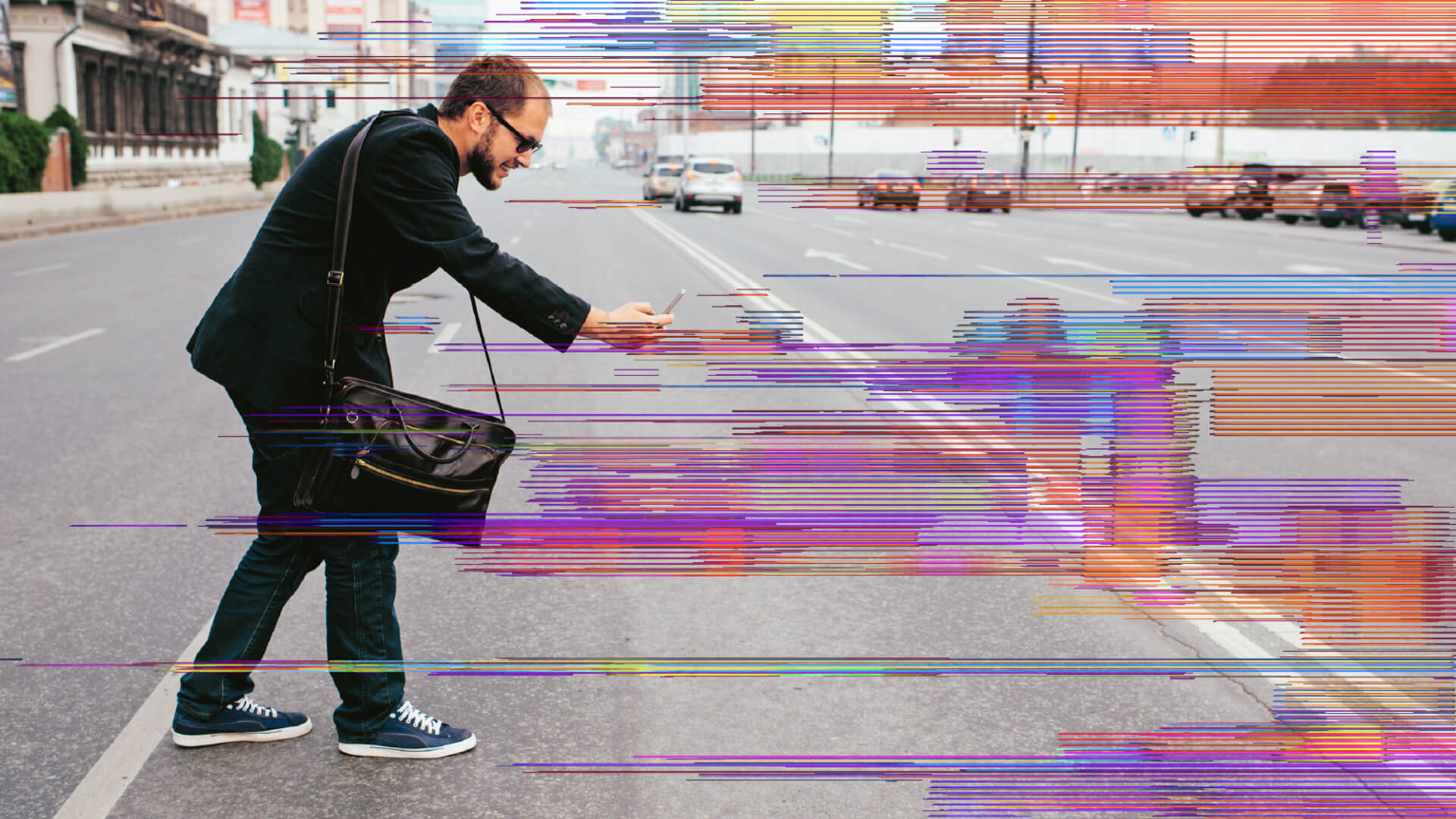
Cars reinventing urban life
Pokémon Go hints at the potential of augmented reality, and new hardware promises to take the concept to the next level. But history says that creating a real great AR gaming experience takes a lot of time and work.
The game was pure magic, I had seen nothing like it before. Well, if not truly magic, it was at least a thrilling way to use cell phone technology for new purposes. Taking advantage of the built-in GPS, the game let you discover fascinating creatures all around you, and collect them in order to use them in battles.
This was way back in 2005 – two years before even the first generation Iphone had seen the light of day – so no, the game was not Pokémon Go. Jadestone Group, a bleeding edge Stockholm games studio, was developing the game Spirits for the Nokia N-Gage phone, and it looked spectacular. It seemed to herald a watershed moment in gaming, where games would expand past the confines of screens into the real world, which would in turn become layered with different types of digital content. That didn’t happen. Not then.
Location-based games like Spirits, Colors (where rival gangs fought for control of turf in big cities) and ”Botfighters” (arguably the first location based game, with battling robots) added up to an exciting phenomenon in the mid ’00s. And Stockholm was home to the developers of all three games mentioned above, at the very epicenter of this quiet rumbling, promising to shake up the entire gaming industry. But despite the hype around “pervasive games” in those days, the concept turned out to be a little bit too bleeding edge to achieve mainstream success.
Dedicated hardcore users
Fast forward to 2012 and a Google company called Niantic Labs launched a game called Ingress. In it, players form teams, fighting others for control of portals, mapped to real world places of significance. The game’s tagline is a nice summary of the whole AR concept: “The world around you is not what it seems”. It has been moderately successful – at this point it has been downloaded 10 million times from the Google Play store – but what’s more impressive is the level of dedication it inspires in hardcore users.
Many multiplayer online games foster a sense of social obligation that encourages users to keep playing. Meeting other players in the flesh as you conquer the world around you proved to amplify those feelings of community. Ingress players have been reported getting tattoos featuring their team logos, planning vacations with the purpose of taking control of portals, and in some cases going as far as leasing boats, helicopters and airplanes to find portals in remote locations such as Alaska, Siberia and Antarctica.
Ingress is the game that would, in 2016, get a full Pokémon makeover. And the popularity of the Pokémon franchise proved to be just the push needed to turn the niche concept of location-based gaming into triumphant mainstream success. In July 2016, several market researchers reported that Pokémon Go had more daily users in the US than Twitter, and users were even spending more time with the app than on mighty Facebook.
The colossal user numbers of Pokémon Go has turned the game into a commercial platform in its own right. Savvy proprietors of shops and cafés have installed ”lure modules” in nearby pokéstops (virtual spots handing out items to players), serving the dual purpose of attracting pokémon in the virtual world and attracting Pokémon Go players in the physical world. In July Niantic signed the first sponsorship deal, with every Japanese McDonald’s restaurant getting mapped to a pokéstop.
The success of Pokémon Go is unprecendented, the kind of watershed moment that seemed imminent in 2005. It’s sure to inspire copycats among hopeful game developers, but the path forward for augmented reality, is being paved by others.
In Pokémon Go, the main interface for interacting with the real world is a map view. The layering of virtual objects on top of real images, which happens when you’re catching a pokémon, is pure window dressing. There’s no interaction between the pokémon and the real world as seen through the phone’s lens. However, several tech companies are working to bridge that gap. Microsoft has long been working on a set of goggles called Hololens. It looks like a virtual reality headset, but instead adds 3D graphics onto the real world. Gaming is just one application for the platform.
Tools for both work and home
Microsoft envisions it as a platform for productivity tools for both work and home. Meanwhile, a secretive startup called Magic Leap with funding from industry heavy-weights such as Google, Qualcomm and the Alibaba Group, is working toward similar goals, but with hardware that seems even more like science fiction. Instead of using a screen, Magic Leap throws virtual objects into your field of vision by projecting them directly onto your retina. Hololens was recently released in a developer version, at the steep price of 3,000 USD, while Magic Leap is still keeping its tech under wraps. But soon enough we’ll see if consumers find these AR experiences as revelatory as they are hallucinatory. Judging by the history of location-based games, winning mainstream acceptance can take a lot of time and work. The AR revolution is happening, reality is getting hacked, one step at a time.
Future report insight story
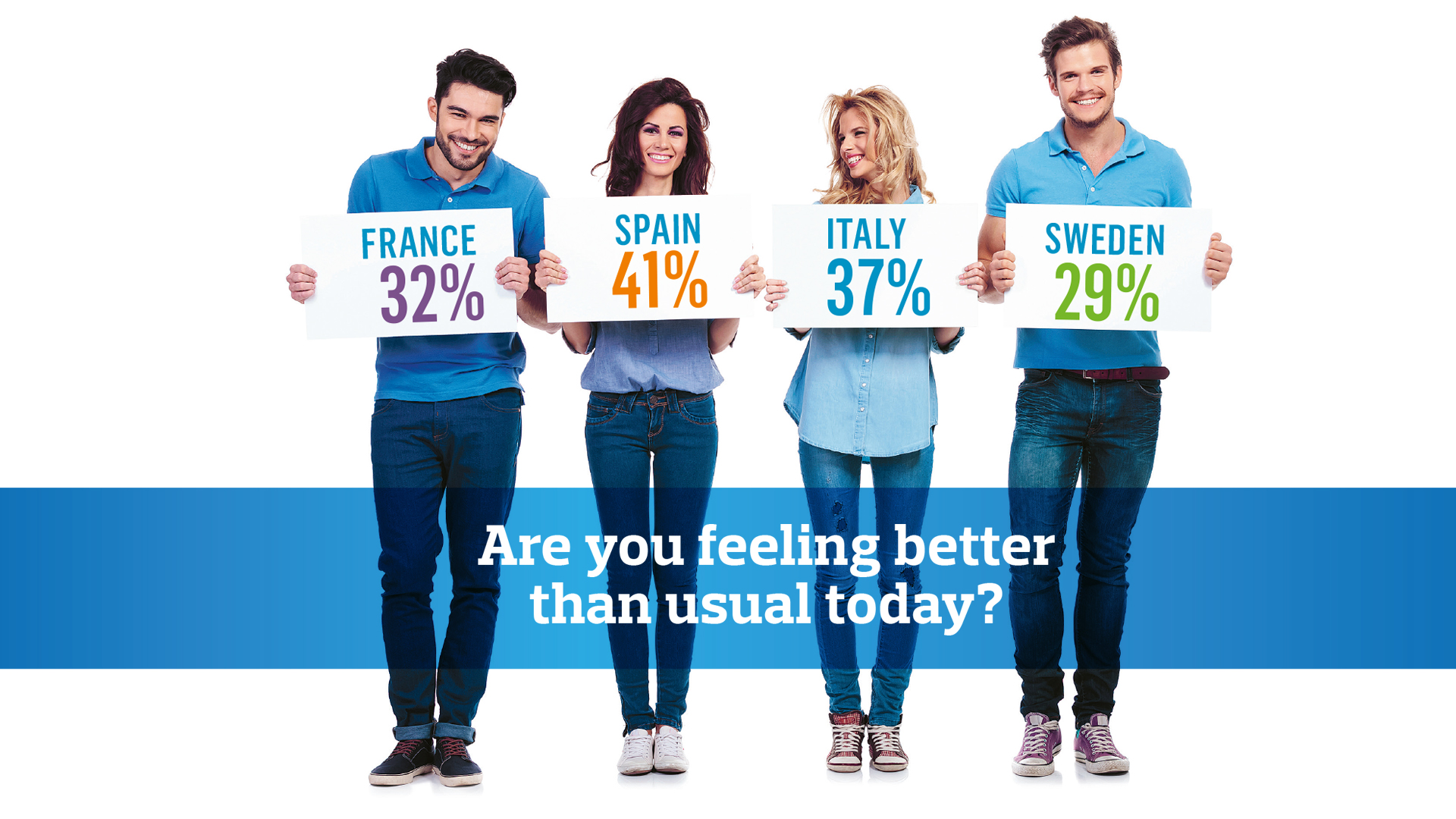
Future report insight story
What do digital habits look like in different European countries? This year’s Future Report Insight Story survey compares Sweden, Italy, France and Spain to find out. Looking further, the findings also tell us how global trends impact the world.
With the growing number of smartphone users and the burst of Internet of things (IoT) mobile phones have become a portal for an ever-growing list of digital activities.
When we look at our survey findings, regarding mobile behaviors, we can observe that users in Sweden, a digitally mature marked, use the smart phone in a more varied way than other surveyed countries.
READING NEWS ON THE PHONE
Most Swedes claim that they use their phone for reading the news, compared to less than half of the connected French. Social media is accessed by a majority of the connected Swedes on their phone, and less than half of the French.
The map function is used most frequent by Swedes and Italians and to a little extent by Spaniards and French. But it is changing fast. Our study suggests that Sweden is about two years ahead of the other surveyed countries.
Mobile payment continues to grow rapidly among customers in the developed world. Most of the connected Swedes have used the phone to pay, a lot thanks to the payment service Swish. Among Spaniards, Italians and the French less than half have used the mobile to pay for a service. Those who haven’t used the mobile to pay yet, in all countries but France, claim that they haven’t had the need, the French say that they don’t trust that it works.
When comparing countries like this, there’s a bigger question emerging – is digitalization bringing the world together, when we share information and millions of people watch the same TV shows, visit the same websites and laugh at the same jokes?
Not necessarily it turns out. Studies show the opposite result, that the change, in fact, is moving us all forward at the same speed, but as different groups. At the same time there is a movement towards more traditional values.
SMS RATHER THAN TALKING
Our survey also digs into consumption behaviors, confirming last year’s report, that the mobile is the device where all the trends come together. Increasingly, we prefer to communicate with our loved ones through messaging apps or sms, rather than talking. We buy stuff like trips, books and beauty products online. We expect to be able to access just about anything with a swipe.
THE AGE OF DIGITAL SNACKING
This means that we are now at the age of digital snacking. So, what does that do to our society, democracy, ethics and morality? What does that do for innovation and entrepreneurship? We are excited to share the study with you. Do let us know what you think!
Read the full report: Insight story
My privacy is your business

My privacy is your business
Being transparent is vital when it comes to privacy in a data-driven age. Opening up for a dialogue with users presents a great opportunity to find new ways of telling the story about how and why data is used, says Ingvild Næss, Group Privacy Officer in Schibsted. In the end it will always be a question of trust.
As a user I want tailor-made services online. Like recommendations from Amazon and Netflix. Now I expect the same when consuming news and searching for jobs, apartments or cars. The same goes for ads. The more relevance, the better for me as a user – and for the advertisers. In order to personalize and give me tailor-made offers, companies need to know me. This means that companies need data about what I like, want and prefer. This calls for a discussion about privacy.
Throughout Europe we already have strict rules regarding the handling of personal data. With the new EU General Data Protection Regulation (GDPR), which will be a reality from May 2018, the requirements will be even more comprehensive. Also, the GDPR requirements will apply to all companies – including non-European companies, such as Facebook and Google – when handling data about European citizens.
A CHALLENGING TASK
The question is really not if, but how companies will manage to provide both personalized content and targeted ads, and at the same time make sure that I can feel comfortable that my right to privacy is respected.
Big data challenges the traditional approach to privacy. One of the basic privacy principles, which is also a part of the new GDPR regime, is data minimization. This is to ensure that only data which are strictly necessary for a defined purpose are collected and used.
Data minimization is difficult to apply in a setting where good results depend on rich enough data basis. One can actually argue that data minimization is not in my best interest as a user, and that there is a clear need to redefine the traditional privacy approach. What is in my best interest is not to limit my vendors´ source to knowledge about me; rather that the data picture my vendors have is as correct and complete as possible. Only then will my vendors be able to derive greater value in return. Privacy is more important than ever. The more data companies have, the more essential it is that I as a user am in control of my own data. The first step to ensure user empowerment is information and understanding. There is little doubt that today´s way of solving this with endlessly long privacy policies does not work. Instead, companies must communicate with me in a manner I understand, can digest and am engaged by.
AN AREA OF OPPORTUNITY
Privacy should even be looked upon as an area of opportunity to have a stimulating dialogue with users, which will be both in the users´ and in the companies’ interest. For instance, looking into how to tell each individual user the story about how the data is used and why, rather than having just a generic text about use of data.
Conducting extensive user research in order to learn and understand which possibilities there are to manage data that is valuable and make sense to users, is crucial. Just like user feedback is extremely important for the development of products and services, and offers a continuous dialogue with users to refine and improve the product offerings.
FROM ONE VENDOR TO ANOTHER
Designed to put users in the driver’s seat, the GDPR further establishes a right to data portability. This right will give me the possibility to manage my data as a single set of information across different platforms; I can choose to move from one vendor to another and bring my data with me. This can be a game changer.
An important trend that we see in parallel with user empowerment, relates to the adoption of privacy enhancing methods and technologies, like differential privacy. This is a privacy model that aims to limit the impact that each individual user´s contribution has on the outcome of an analysis. Basically, it is about using statistical analysis to abstract useful notions about what people do and prefer. The essential part from a privacy perspective is that the model prevents companies from extracting anything about me as a specific user. Thereby, I am also protected against use that may represent a privacy violation – including misuse by hackers, intelligence agencies and other parties to whom I do not want to give access to my data.
There are also a lot of other technologies available and being developed which are about protecting data, such as end-to-end encryption, access management and various forms of anonymization.
We are entering a new era of privacy. We cannot, and should not, fight the collection and use of personal data. Instead, we should find good privacy solutions to give users the best products and services; to empower users while protecting their data. As a user I will be much more willing to give a company valuable data about myself if I am engaged and feel trust.
Reality is getting hacked

Reality is getting hacked
Cars have set the rules for city planning and our lives for ages. Some of us dream about that good-looking, easy-roaming luxurious ride, others just dread costs and traffic jams. Is this all about to change? The arrival of autonomous cars might be the start of a revolution. A carvolution.
On a lovely holiday afternoon, we were riding our Toyota to the summerhouse, two kids in the back two parents up front, when we stopped in traffic behind a Tesla Model X. Still a rare sight in Stockholm, Sweden, 2016, my wife blurted out: “Kids, look that’s an electric car!” “What’s electric?” the five-year old asked, temporarily looking up from her screen. The three-year old would not be bothered with something as irrelevant as a car, no matter the propulsion technology.
Mother again, happy to get the attention and opportunity to inject some real-world knowledge into the Youtube universe: “You charge its batteries to drive, just like your phone! You know, all cars will be electric in the future. No more gas.” “How long does it take to charge?” The five-year old again, cutting straight to the important stuff.
At this point I heard myself starting to speak Engineering, along the lines of how it depends on the power of the charger but maybe the battery pack can be exchanged like a cartridge and so forth. Before I could end the dad lecture coherently I was already starting to regret that I had undoubtedly exhausted my daughter’s attention span. But to my delight she asked dreamingly: “Hmmm, I wonder what kind of car I will buy when I grow up?”
“You won’t even have to drive yourself! It will be like a kind little robot, driving you around by itself! Isn’t that neat?” It was me again, overly excited and by now totally geeked out: “And maybe you won’t actually have to buy a car yourself? You will share it with others and just open up an app, tell it where you want to go, and a car will come pick you up. And isn’t that really cool that…” “Nooooo!” Ester’s anguished wailing from the backseat interrupted and surprised me. “I WANT to have my OWN car! I want to put my toys everywhere in it, and it’s going to charge my ipad, and play music, and maybe if the car is nice to me I will let it drive by itself. But I like to drive so it will only be sometimes.”
Too baffled to respond immediately I realized that Ester had just soundly punctured my utilitarian techno-dream with the clairvoyant backseat wisdom of a pre-schooler.
LONGING FOR A HORSE
In the early 1900’s one of my young grandfather’s most precious possessions was the family horse. Going from pure manpower to horsepower meant a revolution in efficiency and hence wealth for a family of farmers. The horse was also a primary mode of transportation, which meant that going to church and going to school was also feasible in the winter time on the one-horse sleigh. As grandpa grew up farming was of course gradually mechanized and cars replaced horses on the road. Grandfather was most probably the last generation of children longing for a horse – for practical reasons.
For my father’s generation, and myself, getting a car was very important. Looking back at my childhood 1970s and ’80s it seems as if everything happened in the car: family vacation, going to soccer games, the daily commute to work and school, and later on riding to parties with friends, drinking beer in the back seat and perhaps other things… such as singing Sweet Child O´Mine. Of course I wanted a car! I also remember spending silly amounts of time learning to drive. Three times I failed my driving test and boy was I proud when I passed. Still, I am most probably the last generation of children yearning for a car – for practical reasons.
I will be surprised if Ester ever has a car. Will she even learn how to drive? Will car brands be part of her life, like Chevrolet, Toyota and Volvo have been part of mine? Will she ever hunt endlessly for a parking space, run out of gas in the middle of nowhere, or be the night’s designated driver?
According to the WHO some 1.25 million people die annualy in car accidents, one every 25 seconds, many of which are caused by drivers under the influence. Despite knowing the immediate risks well, the lure of alcohol and the induced feeling of self control are so strong that ordinarily sane people keep committing acts of lethal insanity in staggering numbers. Autonomous cars will turn this situation on its head to the benefit of drivers, pedestrians and the alcohol industry. Instead of driving to where you want to have a drink, and stepping out, people will get into the car to have a drink. After work with friends – brought to you by the Absolut Bar Car.
NO NEED TO REST
Another key root cause for automotive accidents is exhaustion. Fatigued drivers make poor decisions, have lapses of attention at crucial moments or just flat out fall asleep behind the wheel. Driving a critical delivery through the night? No problem. Inexhaustible robo-drivers will bring profound change to the trucking and transportation industries. Lorries and articulated vehicles will haul at off-peak hours decreasing traffic, no longer restricted by truckers that need to rest.
But what about human judgment, certainly it cannot be replaced by an automaton? The first versions of autonomous vehicle software will be riddled with bugs, and some of them will cause lethal accidents. But compared to the human software ‘bugs’ of intoxication and weariness the autonomous driver will, on average, be an excellent chauffeur. Of course, there are complex issues of responsibility that will need to be handled differently. If a human driver disobeys traffic rules, thereby causing an accident, the punishment is normally quite lenient. As a society we have factored in the immense benefits of automotive transportation, and the fallible nature of humankind is known and accepted. Consider the same scenario with an autonomous vehicle incapacitating or even slaying a pedestrian, perhaps due to a software bug or a faulty sensor, perhaps due to the careless pedestrian. Can and should we be as understanding? Who is responsible, the owner or manufacturer? Can and should someone be sued for damages?
The technical challenge in creating an autonomous chauffeur that will not go D-Fens has until quite recently been unsurmountable. The standard paradigm of computing, amassing logical statements such as “IF child THEN brake” or “WHEN green light THEN accelerate”, would never have compounded into a self driving vehicle. But with the recent advancements in deep machine learning computers are now perfecting their driving skills on their own, learning with the patient guidance of human driving instructors.
HOW MUCH DATA IS NEEDED
But how will we know when a particular machine is ready to drive? Will they fail their driving tests a couple of times, like I did, and then finally pass and take off in a cloud of dust into traffic? As humans are tested by humans, learning computers are tested with data. How much data? Tesla CEO Elon Musk estimates around 250,000 laps around the world of driving data needs to be collected before regulatory approval. That is one epic driving test! As that data accumulates and transforms into safe driving skill it is my bet that humans will no longer be allowed to drive.
An entirely new category of accidents will emerge. A recent and heartbreaking example was a fatal car accident with a DVD player showing Harry Potter found in the wreck according to some eyeball witnesses. A tragedy, but nothing too strange one would think. Unless… the driver was alone in the wreck and the vehicle was a Tesla Model S commuting on autopilot.
A large share of car usage is related to the tedious, daily commute to work. And funnily enough most people decide to go roughly at the same time of day in the same direction. Today commuting is for most people an inefficient waste of life, but imagine instead going to work in a purpose made autonomous vehicle. Auto-commuting has the potential to be your most productive hour at work! Comfortable, connected, driven by an invisible driver.
In addition, autonomous vehicles will be able to reduce traffic through more efficient usage of road real estate. Owing to split second reactions and machine to machine communication with the vehicles nearby, cars could achieve simultaneous and synchronized starting at red lights, driving within inches of the car in front and seamlessly optimizing routes based on the current traffic situation. No more Falling Down when you are riding in the Mercedes F105 or the Volvo Concept 26.
Not only are today’s cars creeping forward for hours in slow traffic, they are actually standing still most of the time. A whopping 95 percent of the time. In stark contrast, self-driving cars will likely be driving most of the time, immediately picking up the next passenger after drop-off. As our car-defined cities have grown, parking inevitably became a nightmarish issue – for drivers, commuters and city planners. Despite the perennial lack of parking space, cities overall consist of 15-20 percent parking space. What will happen to all that prime real estate when no one needs parking? Green revolution or property crisis? And what about all those suburban garages? At first all that unused space will quite naturally fuel a startup boom, but over time garages will no longer be built. Why should they?
PEOPLE WILL COMMUTE LONGER
And what will happen to the car industry with all that efficiency being squeezed out of every shared vehicle? Sales will plummet and the industry must certainly be doomed! I would not short the market just yet. When the cost of car transportation will go down dramatically, demand will go dramatically up – economics 101. For example, more efficient and productive commuting will increase demand and acceptance for commutes, and hence people will commute longer.
As a car industry executive I would be less worried about volumes and more worried about the threatening irrelevance of car brands. The what?! Think about it, what will be your main transportation brand in the future? Probably Uber or one of its competitors. As vehicles zip around autonomously, and transportation becomes a service on demand, the brand of the hardware manufacturer will ultimately be less important.
Much like consumers of data could not care less whether their TCP/IP packets are transported by core routers from Cisco, Juniper or Huawei. Yes, there will be niches, and autonomous cars could still be symbols of status, but my guess is that the mass market will change profoundly. The game of musical partnerships chairs is already in full swing, with Volvo partnering with Uber, who also has Toyota as an investor. Lyft and General Motors are already in bed together. What is the future for car insurance brands? Car financing? Corner shop mechanics?
All in all, these changes make me a little sad. Or perhaps nostalgic. In 1994 I firmly believed a car equaled freedom, and I truly yearned for a car. It will seem pretty absurd in a decade or two with all the tire changes, car washes, parking hunting sessions, hours in slow moving traffic, and visits to the mechanic. My kids will think that owning a car is tantamount to a job. Who needs an extra job?! Chances are that owning a car will be their ultimate luxury.
Cars have enormous societal impact – for good and for bad. A revolution in cars will undoubtedly be a revolution in society. A carvolution. Chinese search engine Baidu, Volvo, Google, Nissan and Mercedes-Benz have all promised autonomous vehicles generally available by 2020. On August 16 2016 The Ford Motor Company announced that by 2021 it will offer autonomous vehicles on demand – one century after the production of the iconic model T surpassed 1 million units per year.
Collaboration unlocking the future

Collaboration unlocking the future
Collaboration and empowered teams are what you need to create a really successful organization. For many businesses this means big changes in the working culture. Tina Stiegler, EVP People, Change and Strategy in Schibsted, looks into the trends that are shaping HR of tomorrow.
HR is going into a new phase. After fighting its way into becoming at strategic force, incorporated at the heart of the business, it’s time to become the real “People Partner”. It’s a fundamental change that means creating a new culture and finding new ways to attract talents.
The reasons behind are found in the changes in the world around us, not least the technology advances and the competitive business landscape. But this change is also connected to new generations entering the work place, and to new ideas on how to reach the best business results in the most efficient way. HR people are talking about “The new organization” and “Empowered Teams”.
McCRYSTAL´S TEAMS HAVE INSPIRED
Let me explain a bit about these teams by telling the story of the American General Stanley McChrystal. In his book “Team of Teams”, McChrystal describes how the US military’s hierarchical command and control structure suffered defeat when Al-Qaeda disrupted the army and won battles in the early stages of the Iraq war. McChrystal decentralized authority to highly trained and empowered teams and developed a real-time information and operations group to centralize information and provide all teams with real-time, accurate data about war activities everywhere.
This new structure enabled officers to quickly move from their administrative positions to mission-oriented projects for a set purpose, and it changed the game.
Even if most of us don’t deal with an army, many businesses do know about disruption and McChrystal’s tactics serve as an inspiration to many companies. Why is this so accurate in businesses today?
It all comes together when looking at the changing world. In a highly competitive landscape, where disruption is just around the corner, there’s a need to speed up processes, to be more custom-oriented and adapt to an ever-changing reality.
Empowered teams get the best out of people – the essence is to give small groups the freedom to experiment while driving everyone to share what they learn across the entire organization.
GENERATIONS WITH NEW NEEDS
These ideas also fit the needs of the new generations. Today there’s a real fight to find the best talents and to win this game we have to recognize that millennials have slightly new needs, values and demands.
They have high expectations for an inclusive and collaborative culture, and their own personal development. They also know how to value life as a whole and they are focused on a higher cause, wanting to know how they contribute to making this world a better place at work. Nice food, access to gym facilities and free massages, simply are not enough anymore.
To tackle this a new concept is getting established, with Airbnb in the lead – the “workplace as an experience”. This means taking all elements of work into account – the physical, the emotional, the intellectual, the
virtual, and the aspirational.
This is why HR leaders will have to be that people partner and start building a new culture, focusing on creating a shared culture, designing a work environment that engages people, and constructing a new model of leadership and career development, built on a strong learning culture, collaboration and innovation.
From the business side you have to be prepared to challenge yourself. To tear down old hierarchies, give up established ways of doing things and open up – and allow for decisions to be made across the organization.
A BROADER PICTURE
Data and analytics will also play a big part in HR looking forward. In Schibsted we’ve taken a first step, introducing a common tool across our business – Workday. For a start this will facilitate routines, but also serve us with a broader picture on our workforce. With these kind of tools and their follow ups HR will be able to support managers with data and help making data driven decisions.
HR – like everything else in the world – needs to continuously develop to remain relevant. But it will still be about how to attract people, challenge them and make them grow. It’s about all of us, how we together create a working environment that makes our business prosper.
TV: habits are hard to break

TV: habits are hard to break
Live video has become a strong trend in almost all media houses. But the future of TV and online video is much more diversified. We are going to get plenty to choose from, says Ehsan Fadakar, Head of Social Strategy in Schibsted Sweden.
It all started in social media and with a prediction from Facebook’s founder saying that live video is the future. Searching for answers in a challenging time and with a complicated future ahead, media houses quickly jumped on the live-train. But when looking at numbers, the trend doesn’t make much sense. All facts we have access to and how personalized, static feeds control the way we consume content clashes with the live trend.
Do I think live video is the future? No, not really and I hardly know one single person who would watch something other than sports and extreme news events live. But do I think live video will be a part of the future? Definitely. Gameification will revolutionize how we interact with live TV. There will be more reasons to consume live. But this is only one prediction.
The future of TV and online video is much more diversified and awesome than one can imagine. It’s a great time to be alive if you love well-directed television and can’t leave your smart phone behind. You’re going to get plenty to choose from. The question is what you really will prefer.
Will you go to the movies and put a VR device on or will you just pop the popcorn in your own kitchen and watch the latest blockbuster at home? Will television itself survive the individualization of VR helmets in your home? Are we really going to watch our favorite shows on a small smartphone screen? Or will I be able to watch Zlatan Ibrahimovic play for Manchester United through a thin camera lens in his own eyes? And will someone at last offer us a package deal for all our favorite shows, regardless if they are produced by Netflix, HBO or Hulu?
Looking at where we are today also gives you perspective: 85 percent of all video on Facebook are silent. If this is the future of news you might argue that text on images without sound looks a lot like the articles we write today.
HOW WE RELATE TO TECHNOLOGY
The possibilities and challenges will be endless and if a person tells you he or she is sure about the future, he or she is probably not telling the truth. TV, and how we consume it, is such an integral part of our society that it will take a really long time before we see the massive changes some are predicting. But we can agree on this: the future of TV is the future of our relationship with technology, all depending on how well and quickly we adapt to the new advances.
My guess is that things will move slowly because humans move slowly. We have habits that are hard to break. What we have seen in the past ten years since the smartphone revolution won’t happen as quickly again. Despite all the Iphones, Androids and the internet infrastructure becoming so much better in just a few years, many things haven’t changed at all. We still go to the movies, we still have cable and linear TV and we sure want to see the new episode of Game of Thrones “live” now, together with our friends at home in front of the big TV screen.
The shared experience holds back the technological advances. This moves TV in a different, individual direction. The personalized feeds are checked by our need not to be, or consume, alone. Yes, things are moving in different directions. But relax, the unengaged, inactive, simply-sitting-and-watching-a-show-on-TV-behavior is still number one by far.
The future might already be here, but sometimes we – as human beings – don’t feel the need to rush to get there. Some things will have to take their time. Some habits don’t break easily.
La dolce vita
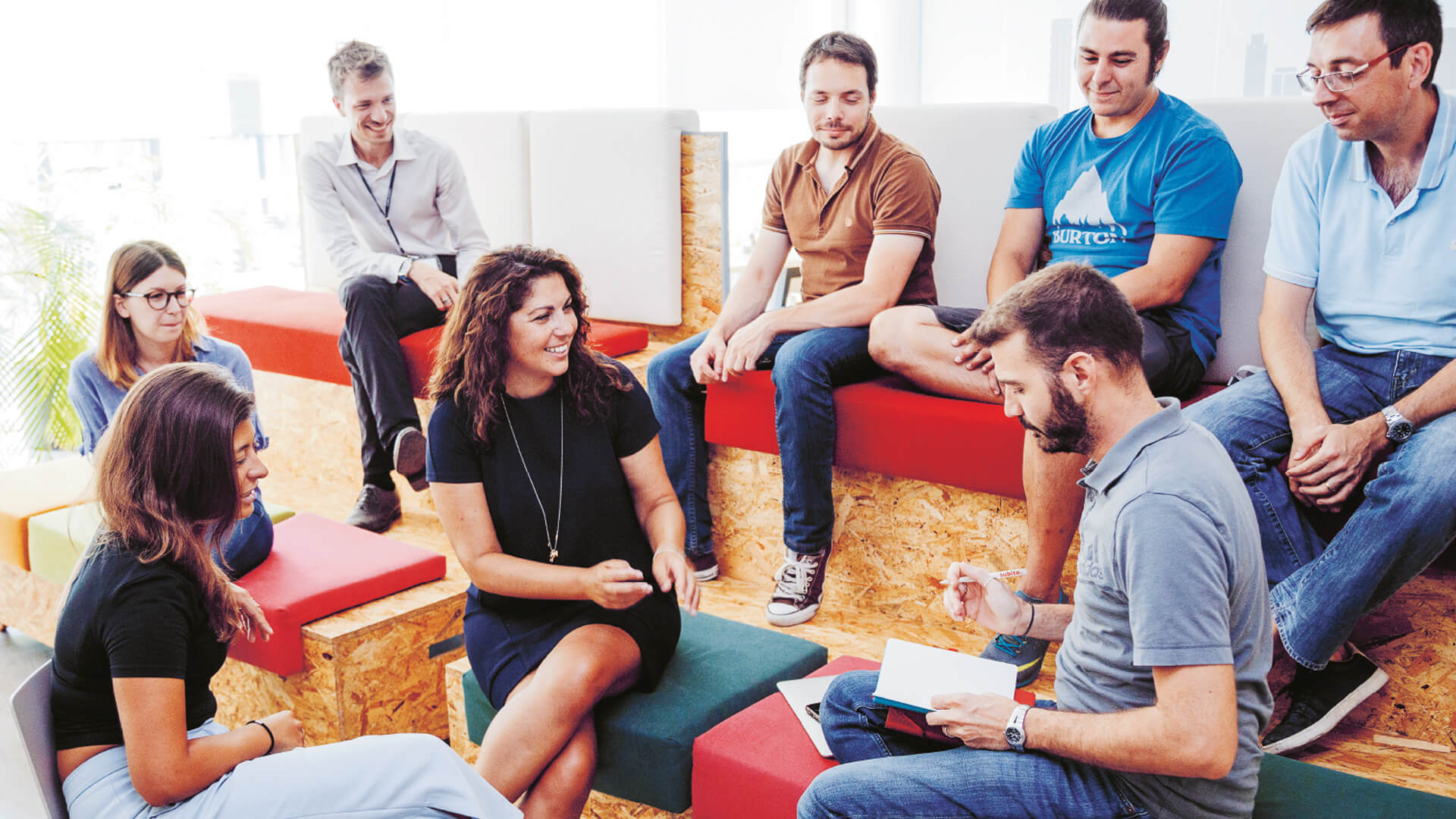
La dolce vita
Motivated and engaged employees are necessary for achieving success. To reach that, collaboration and empowerment are key factors within a company’s culture, says Melany Libraro, general manager at Schibsted Italy.
Italians love the “sweet life”– as Fellini testified in his well-known movie. But nowadays, in order to have a satisfying life, Italians need to experience “la dolce vita” during working hours, too.
Over the past years, Italian companies have tried to adapt to lifestyle changes by launching a variety of welfare initiatives. But they are still considered a “gift” to employees, rather than a substantial part of the employment reward.
A DEEP CULTURAL CHANGE
Due to fast growth in the number of employees, Schibsted in Italy has gone through a deep cultural change. To avoid negative repercussions the whole company has been actively involved in defining a shared welfare policy.
After identifying cultural and organisational inclinations, we focused on improving them in accordance with employees’ needs and wishes. Collaboration, flexibility, personalization and empowerment have been integrated within the company’s culture, through workshops on top leadership principles.
This led to the definition of some of the welfare activities:
- Smart working, company values chart (we are a team, we adapt quickly, we think customer first, we love a challenge)
- Dedicated services for personal wellness (organic fruit, yoga classes, pilates, massages)
- Coaching lessons (conferences, training sessions)
- Courses dedicated to parenting (workshop for new parents, coaching both for new mothers and for women managers)
- “Workplace Health Promotion” (an international network dedicated to the development of good practices for health at work).
IMMEDIATE EFFECT
The positive effects on the organisational culture have been almost immediate. This demonstrates the fact that a good welfare system, built on the actual needs of employees, makes them motivated and proud of being part of the company. In the first half of 2016 each employee has had only 6.5 hours of sick leave, an amount definitely in decline compared to the same period of 2015 when it was 16.5 hours. But more important – the employee net promoter score has increased from 29 percent in December 2014 to 56 percent in July 2016.
“La dolce vita” is part of the company business itself: success is only achieved through the collaboration of motivated employees. Drawing a shared welfare system has set the basis for a company culture built on mutual respect.
These changes are just the first steps of a bigger process that will introduce the concept of “Total Compensation”: a set of services and perks for the employees in addition to the mere salary. This will allow us to put welfare at the core of our organisational culture. This approach supports the growing need for talent retention. We don’t only compete in the classified space, but with the skill shortage in the digital space. We compete for talent, and differentiating ourselves from other recruiters becomes increasingly crucial.
The power of photojournalism

The power of photojournalism
Press photography has struggled to find its place in the digital era. But things are changing. “Where the children sleep” has been a worldwide success, demonstrating that photography as a medium has gained new strength. Future Report met up with Magnus Wennman to talk about his project and how technology is giving him new options.
Two journalists are on their way into a hotel in Lebanon, close to the Syrian boarder. Two boys and a man are lying outside the entrance. They are surviving on the food people passing by in cars are giving them. But each time a car stops the man is afraid – will the person give them food or want to buy his children?
“As a press photographer on assignment I am prepared, but nonetheless I was caught off guard; it moved me deeply,” says Magnus Wennman.

Magnus is a celebrated press photographer at Swedish newspaper Aftonbladet. He has won several photo awards, covered conflicts and told stories from all over the world. But “Where the children sleep” has a special significance to him. In eight countries he has taken pictures of refugee children where they sleep – on a blanket close to a forest, in a city square, by a street, outside a train station, in refugee camps – far away from home.
“Meeting the children in an ordinary situation such as going to bed, that’s hard not to relate to. Everyone knows that a child should be able to feel safe when going to sleep for the night.”
The pictures have been published in more than 50 countries and in collaboration with the photography museum in Stockholm (Fotografiska) and UNHCR “Where the children sleep” became a touring exhibition going around Europe and the US. Now there’s also a book.
There have been a lot of questions about where the photojournalism is heading when media industry is focusing on being first in delivering the latest news, minute by minute. But things seem to be changing, mainly thanks to new technology, new digital formats and the need for media houses to attract a loyal audience with premium content.
VISUAL STORYTELLING
“The image in itself has always been strong. Now it’s about using its power together with new technology and taking on the challenge – and the responsibility – to tell interesting stories. I believe that visual storytelling will become more and more important ahead,” Magnus explains.
All this also means a new role for press photographers.
“Today a photographer is more of a journalist who needs to choose the right tools and the right way of telling a story for the right platforms. Today I am, for example, able to film a documentary with my ordinary camera. I’m really not that interested in the technique itself, but I like being first with the latest. I love trying things out, testing new ideas.”
Like one of his recent assignments – covering the poverty and famine in Malawi with a 360-camera.

The fact that we are living in a constant flow of pictures is another factor paving the way for a deeper interest in photography in general. Photography has become a social activity that to some extent also contributes to a growing overall interest and to the popularity of a museum like Fotografiska in Stockholm.
To Magnus Wennman “Where the children sleep” has meant travelling around the world, while still working at Aftonbladet, and releasing the book this August, the book is dedicated to his wife and his son.
“I don’t know if I could have made this project if I didn’t have a child myself. I tuck my son in at nights, and I know what an important moment it is, an everyday moment where he feels safe. But the refugees’ children don’t have that safety and comfort.”

Watch Magnus Documentary Fatimas Drawings: http://darbarnensover.aftonbladet.se/chapter/fatimas-drawings/
The way we pay
The way we pay is changing dramatically and quickly. The question is if we even understand the transactions we initiate and what will come next. One thing seems clear; cash is soon gone – even if it means no more bills burning holes in our pockets. Dan Ouchterlony, Head of Personal Finance, tells a story of an area where innovation really is happening.
1994 was a long, hot summer. Together with my father I had spent the better part of a week with my shoes planted in melting roofing tar, renovating the family’s lake house. Riding shotgun back into town on the Friday night I was inspecting my black, sticky shoe soles when dad reached for his wallet and uttered the magic words: Here’s your pay. Here is your pay – It was simpler back then.
Flash forward to today: I am shopping for food with my two-year old. She loves riding in the mall’s custom-built grocery cart and she loves helping her dad to pay. Well, actually, she loves inserting the card, punching in the pin code and pressing the big green ok button on the store’s card terminal. Little does she know that we, in fact, did not just pay. We authorized a complex multi-step process involving a handful different parties: She 1/ authorized my credit card issuer’s bank to transfer money to the store’s 2/ acquiring bank using the terms of the 3/ card association VISA and in the process she put 4/ me in temporary debt and extended 5/ the store a line of credit. Phew!
The payments industry has skillfully made something complex simple for the user. In fact this knack for simplification is at the core of what drives innovation for the simple reason that lowering friction, and obscuring the value of money, increases usage. Our irrationality in spending behaviour has long been the target of innovation.
With equal skill the industry has been obfuscating and convoluting the cost of the transaction. As a user you never really know how much you pay to pay. Sure, there is a yearly fee in some cases. But what about currency exchange spread, late fees, interchange fees, and overdraft? What does paying for things really cost?
Innovation on multiple levels
Daddy got ten cents on the dollar, sang Barbra Streisand. In the payments case it is about a quarter of a cent per dollar. That might not sound too bad, but the amount of dollars being paid is colossal. According to Boston Consulting Group more than 400 trillion dollars in digital payments are being handled yearly – that is around five times the global GDP! In a classic case of a small slice of a big pie, one trillion dollars are being captured and shaved off yearly.
With a trillion dollar prize it is no surprise that the payments space is seeing immense start-up and venture capital action. Innovation is really happening on multiple levels at once. Most of the action is not revolutionizing the payments infrastructure as such, but rather bringing existing payment technologies into new devices and situations. One example is Apple Pay, which in short is a very clever and user friendly way to use your existing credit card. Nothing more, nothing less, at least from a payments perspective.
If using the smartwatch as the key to digital transactions does not seem innovative enough, how about paying with chat messages? Some speculate that chat or text messages will be the user’s preferred control panel for everything. Snapcash, a partnership between youth-favourite chat app Snapchat and payments startup Square, lets users store their card details and subsequently send each other money with the flick of a finger. Chinese behemoth WeChat has also implemented a similar extension and made quite the buzz in 2013 when scattering 300 vending machines in the Beijing subway, allowing WeChatters to quench their thirst in-between messages using the app. This trend of online-offline convergence of payment is accelerating with offline experiences such as restaurants, kiosks etc. coming online through e.g. chat payments.
Some initiatives go further down into the stack and drive innovation in payments on a more fundamental level. One example is the Swedish, Sequoia-backed company Klarna. Using a familiar payment vehicle, the invoice, and some very clever technology to boot, Klarna’s proprietary credit scoring engine is handing out micro credit in real time. No need for a pre-approved credit line from your bank – just enter a few personal details and press the button! The beauty and simplicity is inseparable from magic, luring over 35 million users and 50,000 e-commerce companies to date. In fact, the process is so frictionless that many users do not realize they have taken a loan – until interest fees and late fees are unshrouded. As part of the business model, Klarna operates their own debt collection firm and have been criticized for being far too aggressive.
Bitcoin can change the game
One particular niche under attack is international payments, or remittances. Why? Among other things: Currency exchange spread. It is rather hard to tell unless you do your due diligence, but banks and payment companies do a surprisingly bad job of buying and selling currencies on your behalf. Purposefully? The high fees are a moral crime, according to top VC Marc Andreessen. This very high margin business for banks and money transfer specialists like Western Union is under pressure from well-funded start-ups like CurrencyFair, TransferWise and WorldRemit. What could banks do to protect themselves? According to Currency Cloud CEO Mike Laven, not that much: “Banks have built up a series of legacy systems over the years so they actually have to charge higher fees. It’s not that they’re bad people. Banks just have a higher cost base.” And a very high profitability.
From time to time a new technology comes along that catalyzes profound change and innovation. Examples are the wheel, the combustion engine, and the Internet Protocol. And now the Blockchain, which is the underlying technological invention that powers the more widely recognized cryptocurrency bitcoin. According to ex-Googler Paul Buchheit, famous for creating Gmail and coining the Google motto “don’t be evil”, bitcoin may be the TCP/IP of money. What on earth does that mean? To begin with it means bitcoin is at an extremely early phase of its development. And it means bitcoin has the potential to drastically change how we interact with money.
In the case of TCP/IP who would have thought that doing email in 1995 would be the first step on a path that would have you never again going to a record store in 2015? And the technology TCP/IP was invented by Serf and Kahn some 20 years before, in 1974. In 1994 the Electronic Frontier Foundation released a statement claiming the “World’s first electronic cash payment over computer networks”. Today, 20 years later, a set of very clever technologists and venture capitalists 17 are investing your pensions and savings in the Blockchain and bitcoin, hoping that what we see today is equivalent to email in 1995 – in terms of potential.
The concept of bitcoin not only promises to change the way we pay and interact with money, but also change the fundamental concept of what we pay – currency. How? Today, the concept of currency, fiat, is based on that we trust tax-funded and weapon-protected states (governments) to back up their currencies, e.g. the US dollar or the euro. These currencies are traded in the trillions of dollars daily on exchanges, reacting to ongoing events such as the Grexit or interest rate decisions by the Fed. With bitcoin we do not need intermediaries and governments and can instead trust each other and trust technology.
By leveraging very complex mathematics and calculations owning a certain set of numbers is the equivalent to owning a crisp dollar bill. This has the potential to radically speed up innovation by making handling of currency decentralized i.e. easier, faster and simpler. And also riskier. To date bitcoin is far from mass adoption, in part due to multiple high-profile fraud cases such as the spectacular downfall of Japanese bitcoin exchange Mt. Gox. The Kings of old understood that vibrant marketplaces and bazaars required careful nurture and protection from highwaymen and pirates – market making, or market design in the words of 2012 Nobel laureate Alvin Roth.
The key barrier to wider adoption, however, is the relatively high level of friction for the end user. Most people do not really care about the underlying technological revolution. They do care, however, about the several unfamiliar steps to get started, the fairly high level of computer skills needed for keeping the money safe, and the emotional friction due to the severe volatility of the exchange rate of bitcoin to e.g. US dollars. Not knowing whether your bitcoin would buy you 20, 240 or 60 Bic Macs over a two year period makes bitcoin seem more like a very risky investment than a store of value.
The role of bank is shapeshifting
The way we pay is fundamentally and irrevocably changing. Digital money will flow like water, silently and smoothly, overseen by our personal assistants and connected devices. In the background furious cryptographic computation, biometric identification and instant communication ensure the safety and validity of all transactions. And as transaction leave the realm of the physical the ancient role of the banks is also shapeshifting from giant steel vaults – keeping our valuables safeguarded under lock and key – into the more elusive duty of keeping our personal data secure and uncorrupted. Even the Internet itself is transforming into a network of money, where generations of digital natives will be triggering payments as casually as they shoot off chat messages.
With this fundamental change our emotional relationship to money and payments will also evolve. To use the language of today’s youth: the amount of f-cks given by my daughter will be zero when her car negotiates and pays for parking by itself with the garage’s AI. Her smartwatch will silently and biometrically verify her presence picking up the groceries, authorizing the transfer of funds. Instead of keeping mental tabs on any and every transaction she will trust the discrete but precise summaries and warnings in her notification flow.
Summarize ebbs and flows
A newly established coffee shop’s mediocre latte at an outrageous 63 per cent above market price will be flagged down and posted on social media. Who pulled that kind of stunt any more!? At the end of the day or week her personal financial management app will intelligently summarize the ebbs and flows of money, highlighting anything out of the ordinary and recommending the best course of action. She will never have to learn the many social and societal rituals of payment of the card-bill-and-coin generation, such as hiding pin codes, rummaging through purses, or standing in front of the candy machine with the wrong sort of coin in your hand. How will she tip the bartender, just to impress her friends or her date?
Entering the bar that same Friday night I could feel the small wad of bills from my dad burning a hole in my pocket: Self-confidence, a sense of accomplishment, and the promise of a good night out with friends. Paying the bartender for the first of what would become many rounds that night I proudly blurted out: keep the change! Not because the service was fantastic, but because I could.
https://www.youtube.com/watch?v=9fqalm7gilU
Read more
http://www.forbes.com/sites/stevenbertoni/2014/02/18/elon-musk-and-david-sacks-say-paypal-could-top-100-billion-away-from-ebay/
http://www.bloomberg.com/news/articles/2014-10-07/andreessen-on-finance-we-can-reinvent-the-entire-thing-
https://www.bcgperspectives.com/content/articles/financial_institutions_pricing_global_payments_2014_capturing_next_level_value/
http://www.researchgate.net/publication/257618988_The_Realities_of_Spending






